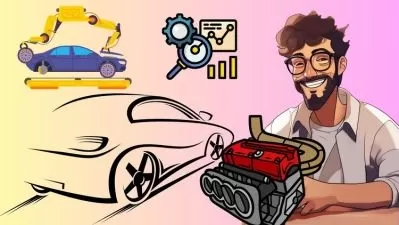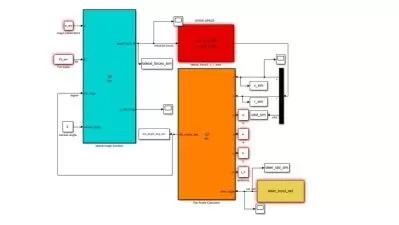Master AUTOSAR COM Stack: Complete CAN & PDUR Guide 2024
Focused View
8:17:03
1 - Introduction.mp4
00:37
2 - COM Stack Introduction.mp4
06:43
3 - PDU Flow.mp4
02:12
4 - FramePDUSignal.mp4
03:22
5 - CAN Intro.mp4
03:34
6 - CAN Frame and Arbitration.mp4
15:42
7 - DATA Frame.mp4
05:24
8 - Transmitter Receiver Node.mp4
02:50
9 - Broadcasting Frame.mp4
01:09
10 - Arbitration.mp4
04:33
11 - Bit Timing.mp4
09:29
12 - Bit Stuffing.mp4
05:10
13 - Errors in CAN.mp4
09:48
14 - Error Frame and Overload Frame.mp4
01:56
15 - CAN Physical Layer.mp4
03:38
16 - Can Driver Introduction.mp4
02:48
17 - Important Terminologies.mp4
04:21
18 - Lower Priority Inversion.mp4
01:13
19 - Outer Priority inversion.mp4
01:18
20 - Driver Services.mp4
02:42
21 - CAN Driver State Machine.mp4
00:51
22 - CAN Controller states.mp4
03:39
23 - State Transitions and Can Driver Initialisation.mp4
03:22
24 - LPDU Transmission and Reception.mp4
04:55
25 - Wakeup and Notification.mp4
03:55
26 - Reentrancy Timestamping and Errors.mp4
04:02
27 - CAN FD Support.mp4
01:50
28 - Important CAN APIs.mp4
04:45
29 - CAN Driver Configuration Details.mp4
10:26
29 - Can-driver.pdf
30 - CAN If in Autosar Layered Architecture.mp4
03:19
31 - CAN If Introduction.mp4
03:55
32 - Common Terminologies.mp4
02:08
33 - CAN If Interaction with other BSW Modules.mp4
04:41
34 - CAN IF Application.mp4
01:52
35 - HOH.mp4
02:47
36 - HRH and HTH.mp4
04:59
37 - Physical Channel View.mp4
05:59
38 - Static Dynamic LPDU.mp4
05:51
39 - Basic CAN and Full CAN.mp4
02:03
40 - Transmit Data.mp4
02:50
41 - Transmit Buffering.mp4
06:51
42 - Multiple CAN Driver Support.mp4
01:33
43 - Sequence Diagrams for Transmission.mp4
05:26
44 - Reception.mp4
07:40
45 - Controller Modes.mp4
04:27
46 - Sequence Diag Start CAN Network.mp4
01:59
47 - PDU Channel Mode Control.mp4
04:09
48 - Software Filtering.mp4
03:28
49 - Data Integrity and Data Length Check.mp4
02:51
50 - Sequence Diag Receive Indication.mp4
01:15
51 - Sequence Diag Notification With Multiple CAN Driver.mp4
01:23
52 - LSDU Disptacher.mp4
01:54
53 - Polling Mode.mp4
01:46
54 - Partial Networking.mp4
02:04
55 - CAN FD Support.mp4
02:05
56 - Security Events.mp4
01:09
57 - Development Runtime Errors.mp4
02:20
58 - Bus Off and Bus off Recovery.mp4
02:31
59 - CAN IF APIs.mp4
07:19
60 - Callback Notification APIs.mp4
02:10
61 - Mandatory Interfaces.mp4
01:41
62 - Configurable Interfaces.mp4
04:43
63 - Configurations.mp4
27:27
63 - can-if.pdf
64 - Introduction.mp4
02:20
65 - Can TP Frames.mp4
07:51
66 - Services provided to upper layer.mp4
03:18
67 - Services Provided to lower layer.mp4
01:10
68 - NSDU Reception.mp4
02:46
69 - NSDU Transmission.mp4
02:12
70 - Buffer Strategy.mp4
01:36
71 - Relationship between CAN NSduId and CAN LSduId.mp4
01:44
72 - Concurrent connection and NPDU padding.mp4
01:35
73 - Development and Runtime Error.mp4
02:52
74 - APIs Details.mp4
03:45
75 - Configuration.mp4
15:15
75 - can-tp.pdf
76 - Introduction.mp4
02:59
77 - Functional Overview and Operations.mp4
04:05
78 - IPDU Handling.mp4
02:39
79 - PDU Reception.mp4
01:42
80 - Cancel Transmission and Reception.mp4
01:22
81 - State Management.mp4
00:52
82 - Routing Path Groups.mp4
01:43
83 - ErrorClassification.mp4
01:55
84 - Sequence Diagrams.mp4
04:14
85 - API Details.mp4
05:29
86 - Configuration Details.mp4
12:01
86 - PduR.pdf
87 - COM Module Intro.mp4
02:41
88 - Frame PDU Signal.mp4
03:22
89 - Com Interaction with other BSW modules.mp4
05:23
90 - Initialization and Deinitialization of COM Module.mp4
01:34
91 - Data Flow Transmit.mp4
01:28
92 - Data Flow Receive.mp4
01:10
93 - DatatTypes and Endianness.mp4
02:10
94 - Message Reception.mp4
01:40
95 - Reception Filtering.mp4
05:34
96 - Transfer Property and Transmission Modes.mp4
04:01
97 - Minimum Delay Timer.mp4
03:56
98 - Use cases.mp4
13:47
99 - Signal Invalidation.mp4
02:29
100 - Handling of IPDU Groups.mp4
03:08
101 - Starting and Stopping of IPDU Groups.mp4
09:38
102 - Signal Indication.mp4
02:46
103 - Reception Deadline Monitoring.mp4
02:17
104 - Transmission Deadline Monitoring.mp4
01:22
105 - Signal Groups Complex Data Types.mp4
05:15
106 - Array Based Access to Signal group.mp4
03:34
107 - Large Data Types.mp4
03:51
108 - Dynamic Length Signals.mp4
03:30
109 - Interface between AUTOSAR COM Module and the PDU Router.mp4
01:54
110 - UpdateBits.mp4
05:14
111 - Signal Gateway.mp4
06:58
112 - Error Classifications.mp4
01:18
113 - Function Definitions.mp4
10:56
114 - CallBack Functions and Scheduled Functions.mp4
04:54
115 - Interfaces.mp4
01:59
116 - ComGeneralConfig.mp4
04:27
117 - Configuration.mp4
24:05
117 - com.pdf
118 - Thank You.mp4
00:28
More details
Course Overview
Gain in-depth expertise in AUTOSAR Communication Stack, covering CanDrv, CanIF, CanTP, PDUR, and COM modules. This comprehensive course equips you with practical skills for automotive software development.
What You'll Learn
- Master CAN protocol fundamentals including frame types, arbitration, and error handling
- Implement CAN Driver, CAN IF modules with state machines and API integration
- Configure PDUR routing and COM module signal processing in AUTOSAR architecture
Who This Is For
- AUTOSAR software developers and engineers
- Automotive ECU communication specialists
- Embedded systems professionals transitioning to AUTOSAR
Key Benefits
- Hands-on understanding of module interactions and API workflows
- Includes CAN FD support and partial networking concepts
- Ready-to-apply knowledge for real-world AUTOSAR projects
Curriculum Highlights
- CAN Protocol Deep Dive (Bit Timing, Error Frames, Physical Layer)
- CAN Driver & CAN IF Implementation (State Machines, Buffering)
- PDUR Routing & COM Module Configuration (Signal Processing, IPDU Groups)
Focused display
Category
- language english
- Training sessions 118
- duration 8:17:03
- Release Date 2025/06/07







